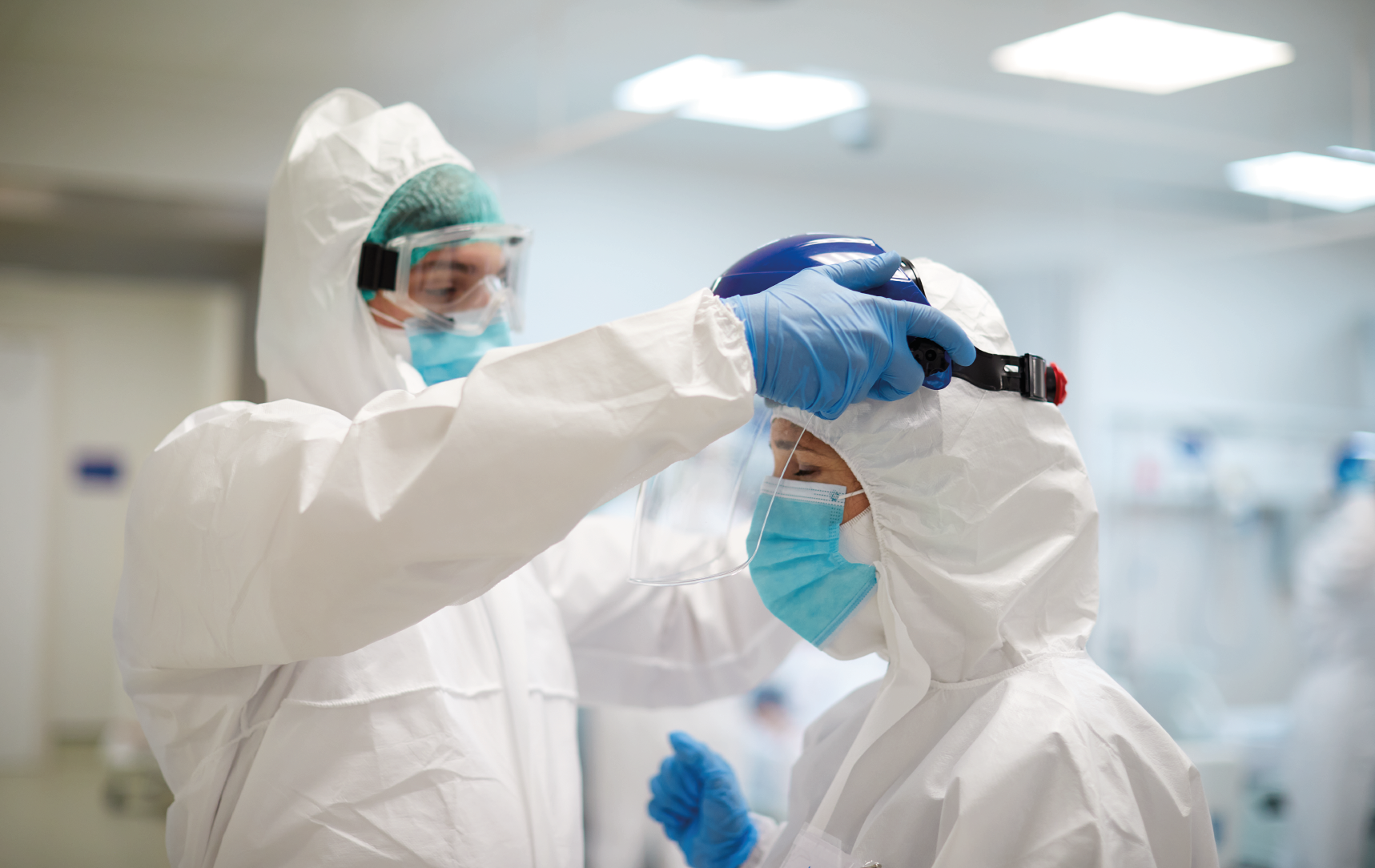It’s integral to any industry with a functioning cleanroom that strict cleanliness requirements are adhered to. On the face of it, this is a huge challenge as everything, both inside and outside of the room is a potential cause of contamination.
Having cleanroom facilities in place are incredibly vital to the running of many organisations, whether you’re manufacturing pharmaceuticals, conducting biological research or working on electrical component production. Contamination of a cleanroom, such as dust in semi-conductor production, or harmful microbes in a healthcare setting, can have catastrophic results, which is why any potential slip up in cleanroom protocol will lead to expensive downtime and cleaning procedures.
Industries operating cleanrooms need to maintain the required standards, and will naturally want to keep their cleanrooms operational at all times. Cleanroom downtime can cost businesses valuable time. Contaminating a product is a huge problem, resources to help them get back on track can be costly. There are four factors which can upset the balance of a cleanroom: environment, process, people and tools.
Environment
The maintenance of cleanrooms and their surrounding areas should follow strict protocols as the first step in negating any potential contamination risks. Here is an example of what a simple cleaning process may look like:
- Wipe down ceilings, lights, vent covers, walls, air returns, and filter grills
- Clean windows
- Wipe down all equipment and other surfaces (benches, shelving, etc.)
- Clean doors, door jams, thresholds and floors.
Starting from the top and working downwards, all of the above steps will provide you with the basis to keep your cleanrooms contaminant-free. Of course, all of the above steps should be done with cleanroom-approved supplies and solutions, and when done correctly will mitigate issues of possible downtime.
Process
Following a repeatable and consistent validated process makes things easier in the long run. Employees who understand this process are more likely to take the correct precautions if any arise, and are more inclined to make suggestions for improvements to keep standards high.
People
By far the most common source of contamination in a cleanroom is the human personnel inside it. In fact, human beings account for over 80% of the contaminants found in these areas. Much of this contamination happens without any effort, as we typically shed about one billion skin cells everyday. If an employee is ill, the risk of contamination increases drastically so best practice is to exclude personnel from manufacturing areas if suffering from ill health to reduce contamination risks.
The importance of adopting stringent cleanroom measures is one factor which will help prevent downtime, but understanding where contaminants come from is key to controlling them correctly. Training your staff, so they understand protocols, practice good hygiene and enforcing hygiene rules across your organisation will be hugely beneficial as well as maintaining the correct gowning procedure.
Cleanroom tools
Important equipment used by cleanroom technicians for daily tasks can be reduced to uselessness by something as small as a speck of dust in a semiconductor production facility, if the correct procedures aren’t adhered to. Keeping one set of equipment strictly for the inside cleanroom environment avoids the issues of contamination of such devices from outside the area. This saves time and avoids the problem of having to clean more regularly before entering the environment, this means there is less chance of contamination.
Following consistent procedures and protocols can be a challenge, but cleanroom requirements are non-negotiable. The safety risks, and potential human cost of compromising on product safety don’t bear thinking about. That’s why when it comes to keeping your cleanroom free from contamination, everything must be scrutinised, from the equipment used to carry out work to the personnel in the room. The good news is, with excellent process, tools and training, you will be better equipped to consistently maintain those necessary standards. This way, you don’t have to lose time decontaminating your cleanroom. With your standards consistently maintained, your work can continue uninterrupted and cleanroom downtime kept to a minimum.
Want to improve your cleanroom procedures?
Download our healthcare brochure now.


